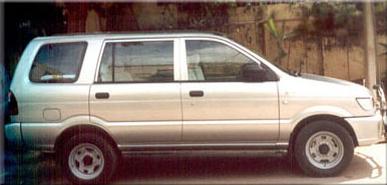|
Something like what happened in Northern Rajasthan also took
place in South – eastern Rajasthan, in the Banas Valley. It was
colonization by a people from outside: from where exactly, we do
not know. For the moment we are unable (or rather we have not
enough, evidence) to discern its development from earlier
beginnings in the Banas Valley itself. Very probably a people
using microliths, and possibly some pottery, but for all
practical purposes, nomadic hunters, having temporary camps on
the flanks of the Aravallis, did live in this region.
Then at Ahar, Gilund and some 50 other sites, a distinctive
pottery, and remains of houses with stone plinths and mud or
mud-brick walls with huge boat – shaped stones, known as saddle
querns (pata or silbatta), came to light. The pottery had black
top and a reddish bottom, with paintings in white on the black
surface. Because of this distinctive feature, Ahar, where it was
first noticed by Shri. R.C. Agrawal was called the Black and Red
Ware culture. This is in a way true, because this was primarily
the pottery which the inhabitants of Ahar used for eating and
drinking. It was a fine, deluxe table-ware, like the china-ware
or stainless steel ware we use today. However, a subsequent more
extensive excavation showed that the Ahar people produced other
fine and distinctive kinds of pottery as well. Above all, we got
some insight into the economy of this people.
Why should a totally new culture or civilization take its birth
in this secluded, hill-girt ? No doubt, the region is beautiful,
and the man-made lakes and place within it have made the Udaipur
region still more beautiful.
This problem has to be studied from various points of view –
historical, archaeological, geographical, environment and
economic. Of these, the geographical is quite important.
Udaipur and its environs are surrounded on there sides by hills;
only the north-east side is comparatively open, which through
Chittor leads one on to the Chambal and Yamuna valleys.
Otherwise, the only other routes for coming in and going out are
the various ghats of which Haldighat is justly famous. It is
through these ghats and the open area in the north-east that
various ruling dynasties entered this region, generally as
refugees or conquerors. The earliest known historically are the
Guhilas who came here in the 8th century A.D-, probably from
Valabhi in Saurashtra. After nearly 700 years the Sisodiyas took
advantage of this naturally fortified region when pressed by
Akbar.
This is known history. But excavations at Ahar and Gilund, and
the discovery of 50 other sites in the Banas Valley tell us that
man was here from at least 2000 B.C. and the question is why ?
The region is fairly fertile, though the soil cover is not much,
because unlike Western and Northern Rajasthan, it receives
regular rains. The forests provide game, some fruits and
vegetables – particularly mahua flowers – and good wood for
building houses. But more than that, the ancient hills around
Udaipur contain copper and, other minerals. How man discovered
this fact, we do not know, but we can tell you the time when he
probably did so. And once he had discovered copper he continued
to live here for centuries until his successors made another
important discovery, like of iron. Thus, according to
interpretation of the evidence from the Ahar excavations, it was
copper which served as a magnet to attract man to this beautiful
hill-girt valley of the Banas.
This early man settled down on the banks of Ahar, not on the
rock. But on the fine silt which the river had laid down, when
it flowed in the distant past some 20 ft. above its present bed.
And hed made full use of environment, his surroundings. Instead
of making simple mud-walled houses, he made a plinth of schist
stones which were at his doorstep, just under his feet. This
plinth was nearly 3 ft. high, quite smooth and regular from
outside. On these stone plinths were built the walls of houses.
These houses again were fairly large, with a leas one or more
rooms by partition walls. The one peculiarity about these
pre-historic houses that we have noticed is that the longer axis
of these houses was from north to south and the shorter from
east to west. (Suryavedha of historical times).
Though the plans of houses changed, the inhabitants continued to
live on at the same place for nearly 1500 years, from 2,000 B.C.
to 500 B.C. on the ruins of the earlier houses. Thus a mound was
being formed, for the level of the habitation, which was
formerly about 15 ft. above the river, gradually rose to 50 ft.
These pre-historic houses at Ahar were furnished with the most
essential things that any house of this period, Indian or
otherwise, would be. Thus, there was a large two-mouthed chula,
a huge broad – shaped stone slab called saddle quern (silbatta)
for grinding grain (and not Masala), and a large variety of pots
and pans. Possibly there was some wooden furniture, which has
now perished. |






